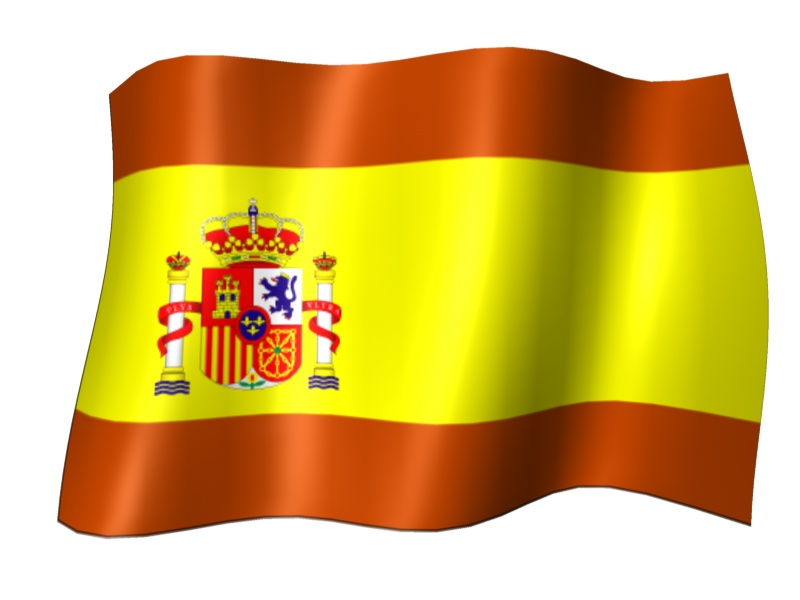 Algunos datos sobre la Sal
Algunos datos sobre la Sal 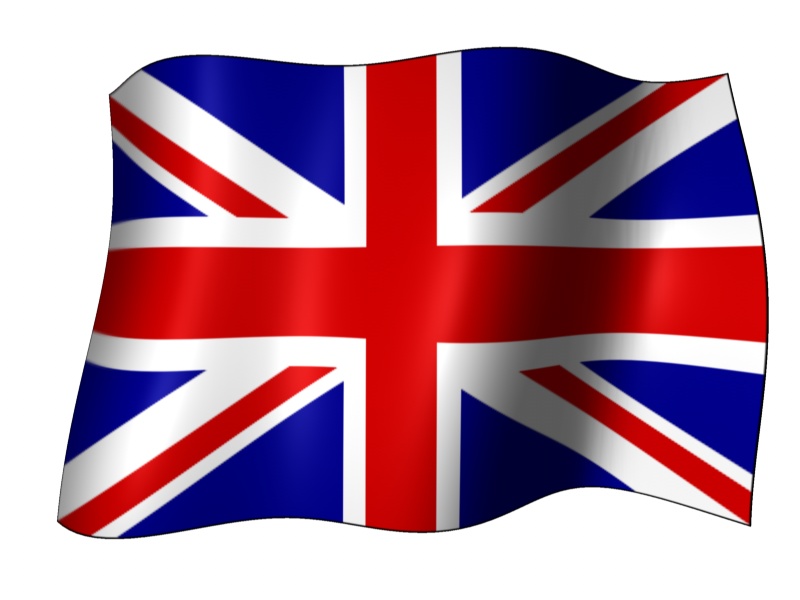 Salt Facts
Salt Facts  Fakten über Salz
Fakten über Salz
 Todos los vertebrados tienen la misma cantidad de sal en la sangre (9 gramos por litro), lo que la hace cuatro veces más salada que el agua de mar.
Todos los vertebrados tienen la misma cantidad de sal en la sangre (9 gramos por litro), lo que la hace cuatro veces más salada que el agua de mar.

© Raimond Spekking / Wikimedia Commons / CC-BY-SA-3.0 & GFDL; http://commons.wikimedia.org/wiki/File:Naturkundemuseum_Berlin_-_Dinosaurierhalle.jpg
Laboratorios químicos han analizado la sal de mesa (sal de roca) y la sal marina para determinar si hay alguna diferencia entre ellas. El resultado fue que no hay diferencia, excepto que la sal marina tiene mejor sabor debido a los otros minerales que se encuentran presentes en el agua de mar.
En el año 2008 la producción mundial de sal ascendió a aproximadamente 260 millones de toneladas.

El cuerpo del ser humano contiene alrededor de 250 gramos de cristales de sal.
Algunos científicos estiman que los océanos contienen hasta 50 mil billones de toneladas (50,000,000,000,000,000) de sólidos disueltos. Si la sal del océano pudiera ser extraída y repartida de forma homogénea sobre la superficie terrestre del planeta formaría una capa de más de 166 m de espesor, aproximadamente la altura de un edificio de oficinas de 40 pisos.

El agua del Océano Atlántico es más pesada que el agua del Océano Pacífico debido a su mayor contenido de sal.
La sal se ha utilizado para conservar las momias egipcias. 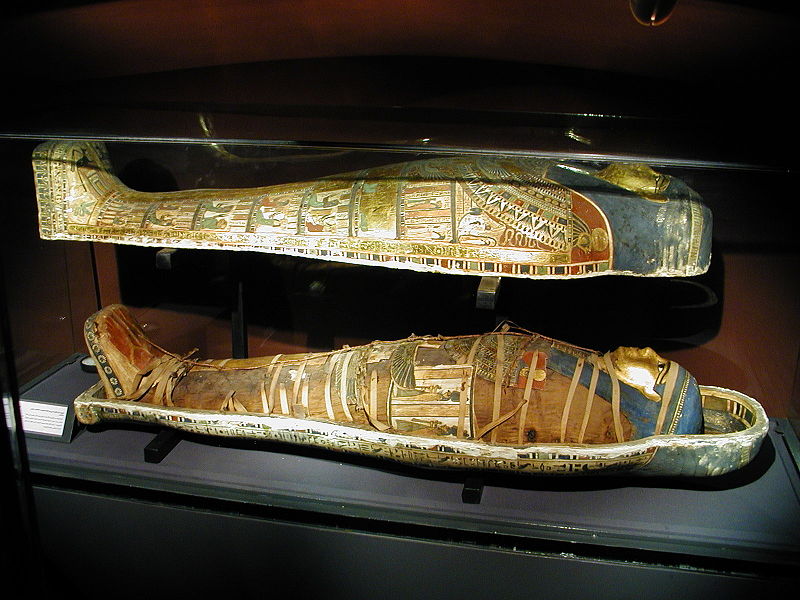
Image by:Gérard Ducher- http://commons.wikimedia.org/wiki/File:GD-EG-Alex-Mus%C3%A9eNat068.JPG
¿Cuántos granos de sal hay en una libra inglesa (0,453 kg)? Hay alrededor de 20.000.000 cristales por libra.
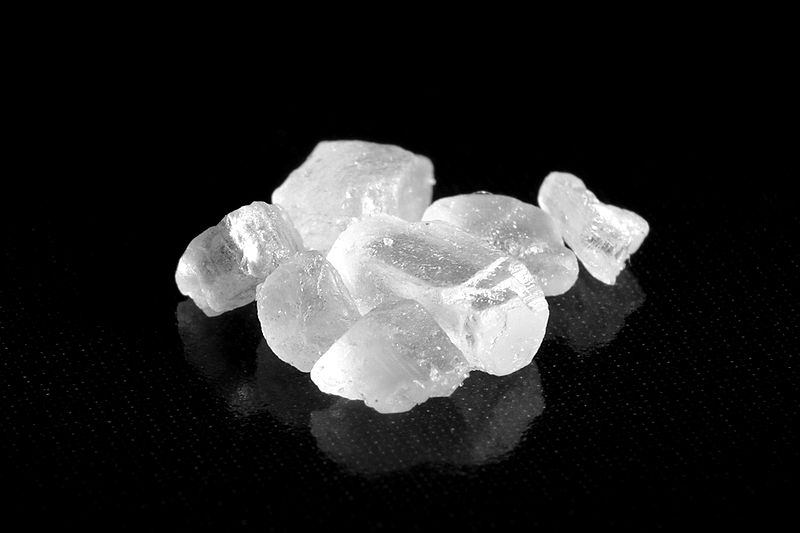
Image by: Mark Schellhase- http://commons.wikimedia.org/wiki/User:Mschel
El emperador chino Yu Hsia (2200 a. C.) fue el primero en aplicar un impuesto sobre la sal. Este fue también el primer impuesto de la historia. En Francia el famoso impuesto a la sal (la gabela) fue en parte responsable del comienzo de la Revolución Francesa en 1789.
税 "Impuesto" en Mandarin
Desde la época del Imperio Romano la sal era un producto de suma importancia. Por ella se construyó un camino desde las salitreras de Ostia hasta la ciudad de Roma, unos quinientos años antes de Cristo. Este camino fue llamado "Vía Salaria". Los soldados romanos que cuidaban esta ruta recibían parte de su pago en sal. Este pago se denominó "salarium argentum". De allí viene la palabra "salario".
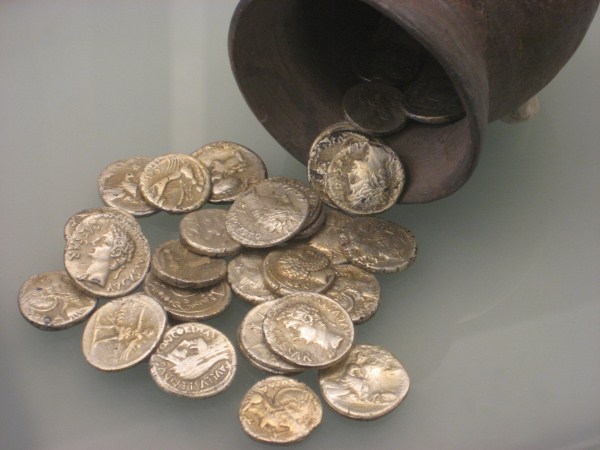
En Grecia, el intercambio de sal por esclavos, dio origen a la expresión "no vale su sal".
Δεν αλάτι αξίζει κανείς
En ese momento la sal no sólo se usaba para condimentar y preservar la comida, sino también como antiséptico (la palabra sal proviene de Salus - diosa de la salud ).
 Salt Facts
Salt Facts
All vertebrates have the same amount of salt in their blood (9 grams per liter), which makes it four times saltier than seawater.

© Raimond Spekking / Wikimedia Commons / CC-BY-SA-3.0 & GFDL; http://commons.wikimedia.org/wiki/File:Naturkundemuseum_Berlin_-_Dinosaurierhalle.jpg
Chemical laboratories analyzed table salt (rock salt) and sea salt to determine a difference. There was none, yet sea salt tastes better due to other minerals present in seawater.
In 2008, world salt production amounted to about 260 million tons.

An adult human body contains about 250 grams of salt crystals.
Some scientists estimate that the oceans contain as much as 50 quadrillion tons (50,000,000,000,000,000) of dissolved solids. If the salt in the ocean could be removed and spread evenly over the Earth’s land surface it would form a layer more than 166 m (500 feet) thick, about the height of a 40-story office building.

Atlantic sea water is heavier than Pacific sea water due to its higher salt content.
Salt was used to preserve Egyptian mummies. 
Image by: Gérard Ducher- http://commons.wikimedia.org/wiki/File:GD-EG-Alex-Mus%C3%A9eNat068.JPG
How many grains of salt are there in a pound? There are about 10,000,000 crystals per pound.

Image by: Mark Schellhase- http://commons.wikimedia.org/wiki/User:Mschel
Chinese emperor Hsia Yu (2200 BC) was the first to levy a tax on salt. This was also the first tax ever. In France, the notorious salt tax (la gabelle) was partially responsible for the eruption of the French revolution on 1789.
税 "Taxes" in Mandarin
Romans paid legionnaires to enable them to purchase salt a salarium argentum from which the word “salary” originates.

In ancient Greece, slaves were traded for salt, and unruly slave was not "worth one's salt" and "with a grain of salt" (i.e. of little value).
Δεν αλάτι αξίζει κανείς
 Fakten über Salz
Fakten über Salz
Alle Wirbeltiere haben die gleiche Menge Salz im Blut (9 Gramm pro Liter), das damit viermal salziger als das Meerwasser ist.

© Raimond Spekking / Wikimedia Commons / CC-BY-SA-3.0 & GFDL; http://commons.wikimedia.org/wiki/File:Naturkundemuseum_Berlin_-_Dinosaurierhalle.jpg
Chemische Laboratorien haben Kochsalz (Steinsalz) und Meersalz untersucht, um einen Unterschied festzustellen. Es gab keinen Unterschied, doch Meersalz schmeckt besser durch die anderen Mineralstoffe, die in Meerwasser enthalten sind
Im Jahr 2008 betrug die Weltsalzproduktion etwa 260 Millionen Tonnen.

Ein erwachsener menschlicher Körper enthält etwa 250 Gramm Salzkristalle.
Einige Wissenschaftler schätzen, dass die Ozeane 50 Billiarden Tonnen (50,000,000,000,000,000) an gelösten Stoffen enthalten. Wenn das Salz vom Meer entfernt werden könnte und gleichmäßig über den Landteil der Erdoberfläche verteilt würde, wäre das eine Schicht von einer Dicke von mehr als 166 m, ungefähr die Höhe eines 40-stöckigen Bürogebäudes.

Das Wasser des Atlantischen Ozeans ist schwerer als das des Pazifischen Ozeans aufgrund seines höheren Salzgehalts.
Salz wurde verwendet, um ägyptische Mumien zu konservieren. 
Image by:Gérard Ducher- http://commons.wikimedia.org/wiki/File:GD-EG-Alex-Mus%C3%A9eNat068.JPG
Wie viele Salzkörner enthält ein englisches Pfund (0,453 kg)?
-Es enthält ungefähr 10 Millionen Kristalle.

Mark Schellhase- http://commons.wikimedia.org/wiki/User:Mschel
Der chinesische Kaiser Hsia Yu (2200 v. Chr.) war der erste, der eine Steuer auf Salz erhob. Dies war auch die erste Steuer der Geschichte. In Frankreich war die berüchtigte Salzsteuer (la gabelle) mitverantwortlich für den Ausbruch der Französischen Revolution im Jahr 1789.
税 "Steuer" in Mandarin
Römer bezahlten Legionäre, damit sie sich Salz kaufen - ein salarium argentum - woher das Wort "Salär" stammt.

Im antiken Griechenland wurden die Sklaven für Salz gehandelt, und widerspenstige
Sklaven waren nicht "ihr Salz wert" und "mit einem Körnchen Salz" (dh von geringem Wert).
Δεν αλάτι αξίζει κανείς